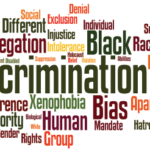Complicating treatment recommendations for pain are psychosocial variables that also play a role in the access to pain treatment for different populations. Data show that pharmacies in nonwhite communities are less likely to carry analgesics.4,5 In one study, the main reasons for not carrying adequate supplies of analgesic opioids were regulations regarding disposal, illicit use and fraud; low demand; and fear of theft.5
When placed in the current controversy over opioid use and the emerging public health problem of opioid overdoses, these data make it increasingly challenging for clinicians to provide the best treatment for pain to their patients. Discounting biological differences altogether—even in the face of emerging evidence of differences (e.g., blacks exhibiting a heightened sensitivity to pain)—may lead to inaccurate treatment recommendations in the same way that holding false beliefs (e.g., blacks experience less pain) does.
In the charged environment in which we live—when any talk of racial differences automatically equates to discrimination or bias—the challenge is to do what good medicine does: gather data, look at the data, openly share and discuss the data, and apply the best response and resources to them.
When placed in context of the current controversy over opioid use & the emerging public health problem of opioid overdoses, these data make it increasingly challenging for clinicians to provide the best treatment for pain to their patients.
Providing Good Clinical Care
Good clinical care begins with good medical education. In an article written for the AMA Journal of Ethics on identifying and combating racial bias in pain treatment, Brian B. Drwecki, PhD, assistant professor, Department of Psychology and Neuroscience, Regis University, Denver, emphasizes medical education as potentially the most valuable tool to reducing racial bias in healthcare.6 Among the factors he highlights as important for reducing bias in medical education is the need to collect data to better understand and ameliorate racial disparities. To that end, he encourages requiring medical students to participate in research pools to examine hypotheses regarding medical decision-making processes that include the effects of racial bias.
Overall, he emphasizes that his own research indicates that a “lack of empathy for black individuals is a proximal cause of pain treatment biases.”
For Dr. Edwards, empathy-oriented interventions combined with education may reduce biases. Empathy-oriented interventions could include imagining oneself in the situations of others and trying to understand the obstacles others face. “It may be beneficial for healthcare providers to reflect on how difficult and challenging it can be for some patients to seek treatment from our healthcare system,” he says. “For example, many patients face issues ranging from difficulty understanding their insurance coverage to arranging transportation to affording medical care costs to, sometimes, dealing with suspicious or biased providers.”



